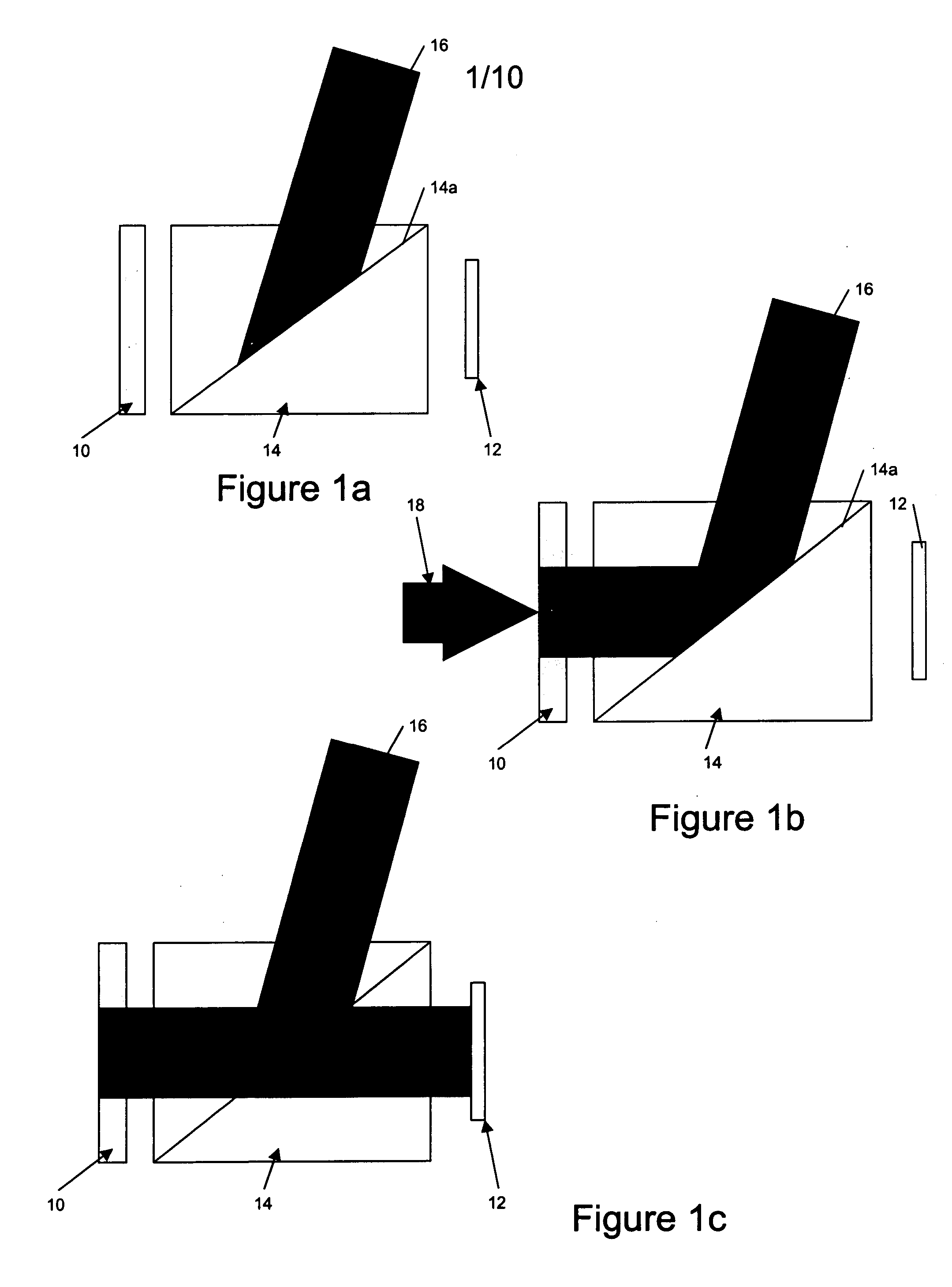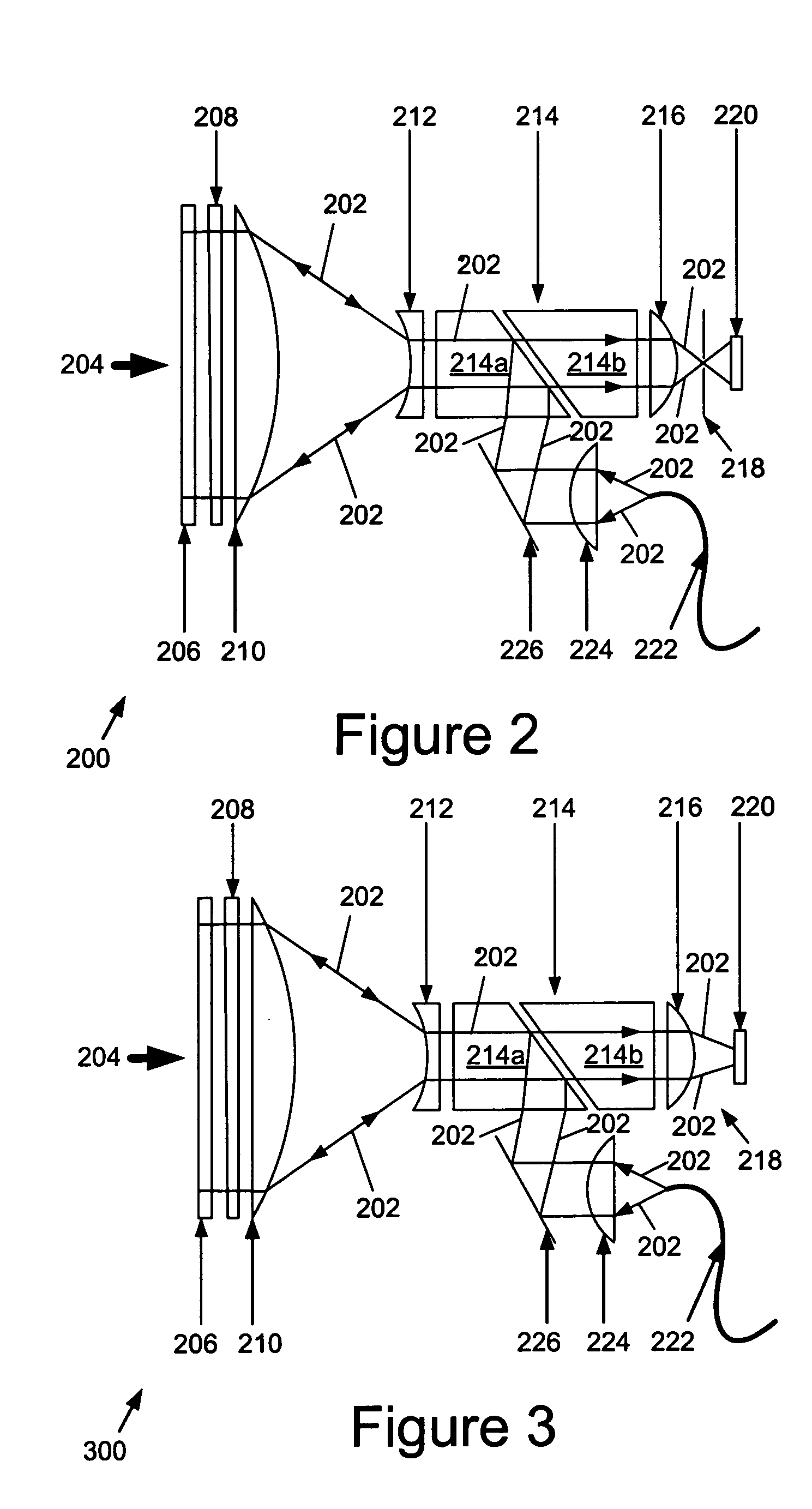Terahertz radiation sensor and imaging system
a radiation sensor and imaging system technology, applied in the field of terahertz radiation sensing apparatus and methods, can solve the problems of difficult to detect radiation in the terahertz part of the electromagnetic spectrum, affecting the commercialization of this technology, and affecting so as to facilitate the perfusion of objects and facilitate sampl
- Summary
- Abstract
- Description
- Claims
- Application Information
AI Technical Summary
Benefits of technology
Problems solved by technology
Method used
Image
Examples
Embodiment Construction
[0064] Referring to FIG. 1, a simplified terahertz radiation sensor comprises an electro-optic crystal terahertz radiation detector 10 and a photo-sensitive detector 12 between which an optical path includes a polarizing beam splitter rhomboid 14, for example a glan-laser prism (which may or may not be Brewster cut). A probe beam 16 enters the radiation sensor and is reflected by an internal interface 14a of the prism and polarized (FIG. 1a). The polarized probe beam then passes from the beam splitter 14 on to the electro-optic sampling (EOS) crystal 10, the probe beam 16 passes through the EOS crystal and is internally reflected at its front face timed to coincide with the arrival in the EOS crystal of a pulse of terahertz radiation 18 (FIG. 1b). The terahertz pulse induces a change in the birefringence of the EOS crystal such that the polarization of parts of the probe beam changes. The probe beam 16 passes through the EOS crystal and is internally reflected at its front face, the...
PUM
| Property | Measurement | Unit |
|---|---|---|
| refractive index | aaaaa | aaaaa |
| frequencies | aaaaa | aaaaa |
| optical paths | aaaaa | aaaaa |
Abstract
Description
Claims
Application Information
 Login to View More
Login to View More - R&D
- Intellectual Property
- Life Sciences
- Materials
- Tech Scout
- Unparalleled Data Quality
- Higher Quality Content
- 60% Fewer Hallucinations
Browse by: Latest US Patents, China's latest patents, Technical Efficacy Thesaurus, Application Domain, Technology Topic, Popular Technical Reports.
© 2025 PatSnap. All rights reserved.Legal|Privacy policy|Modern Slavery Act Transparency Statement|Sitemap|About US| Contact US: help@patsnap.com



